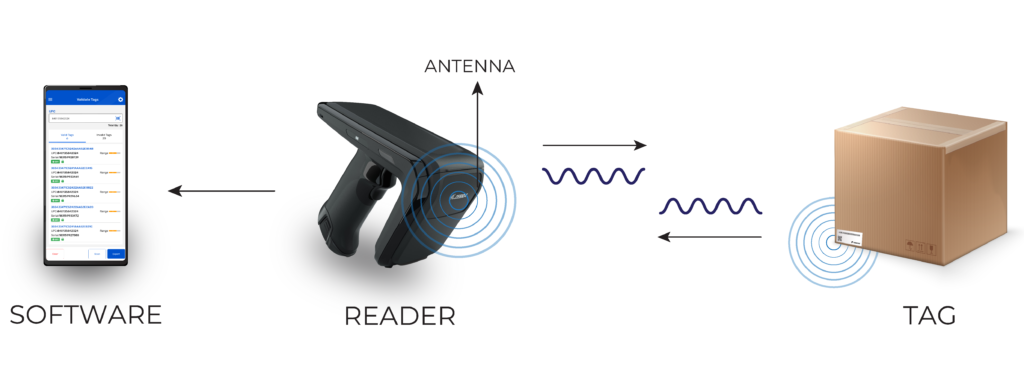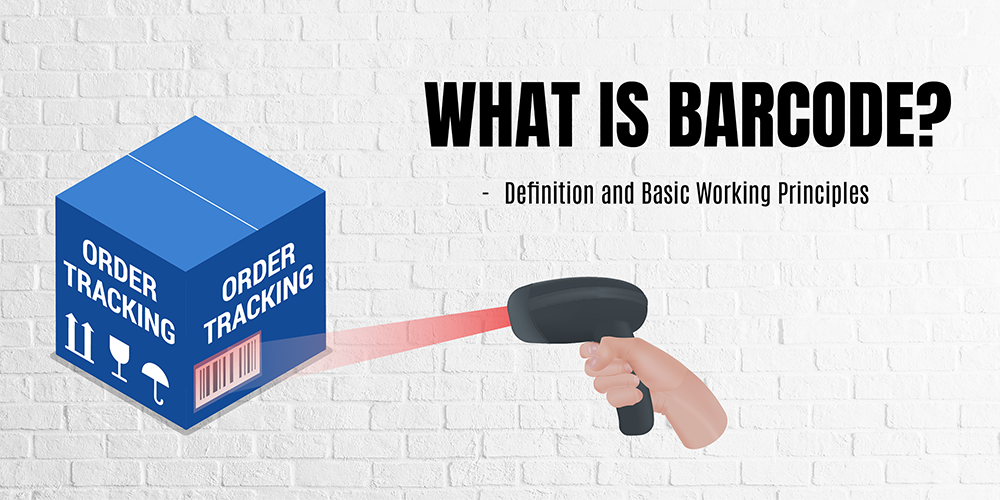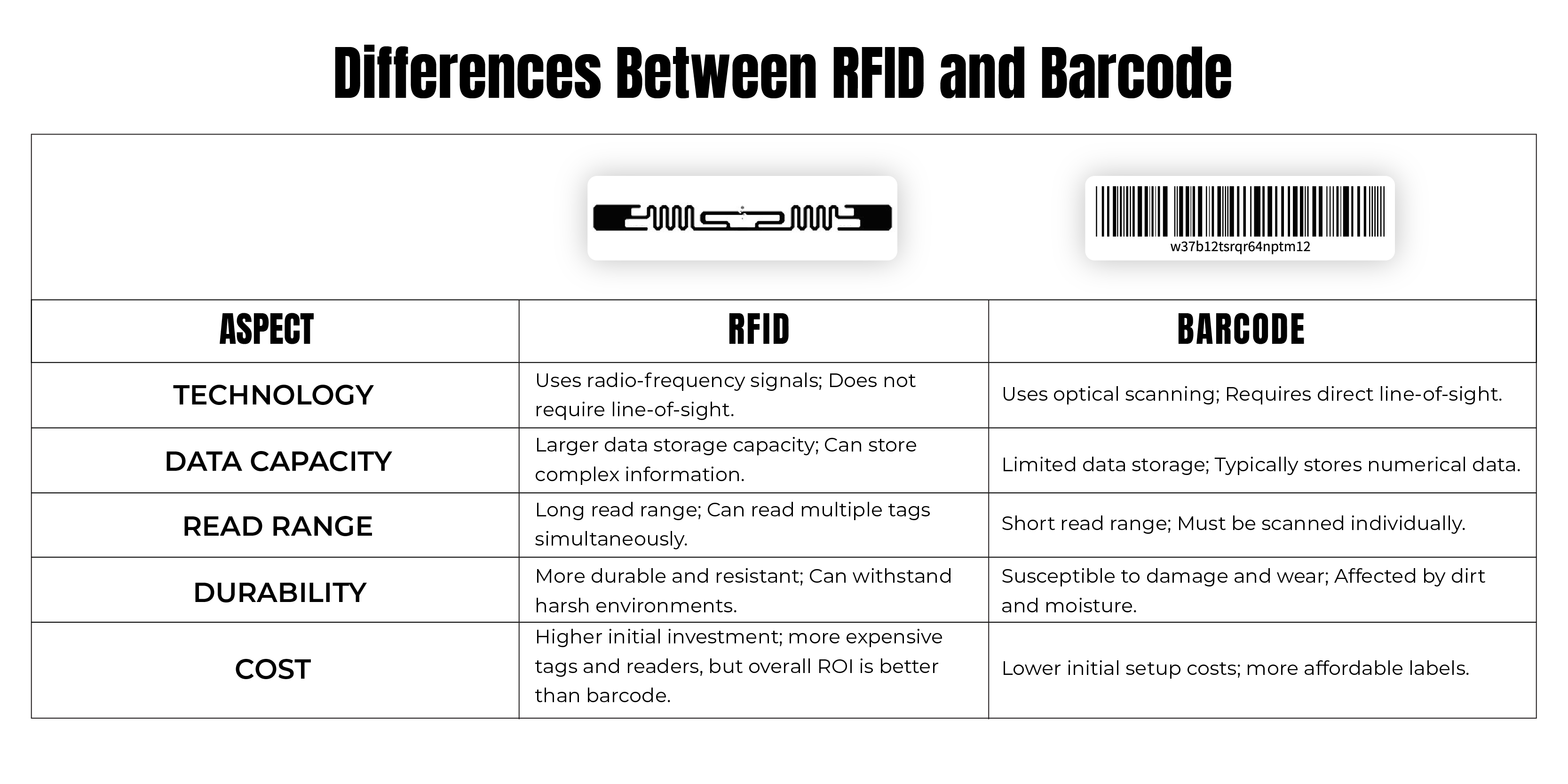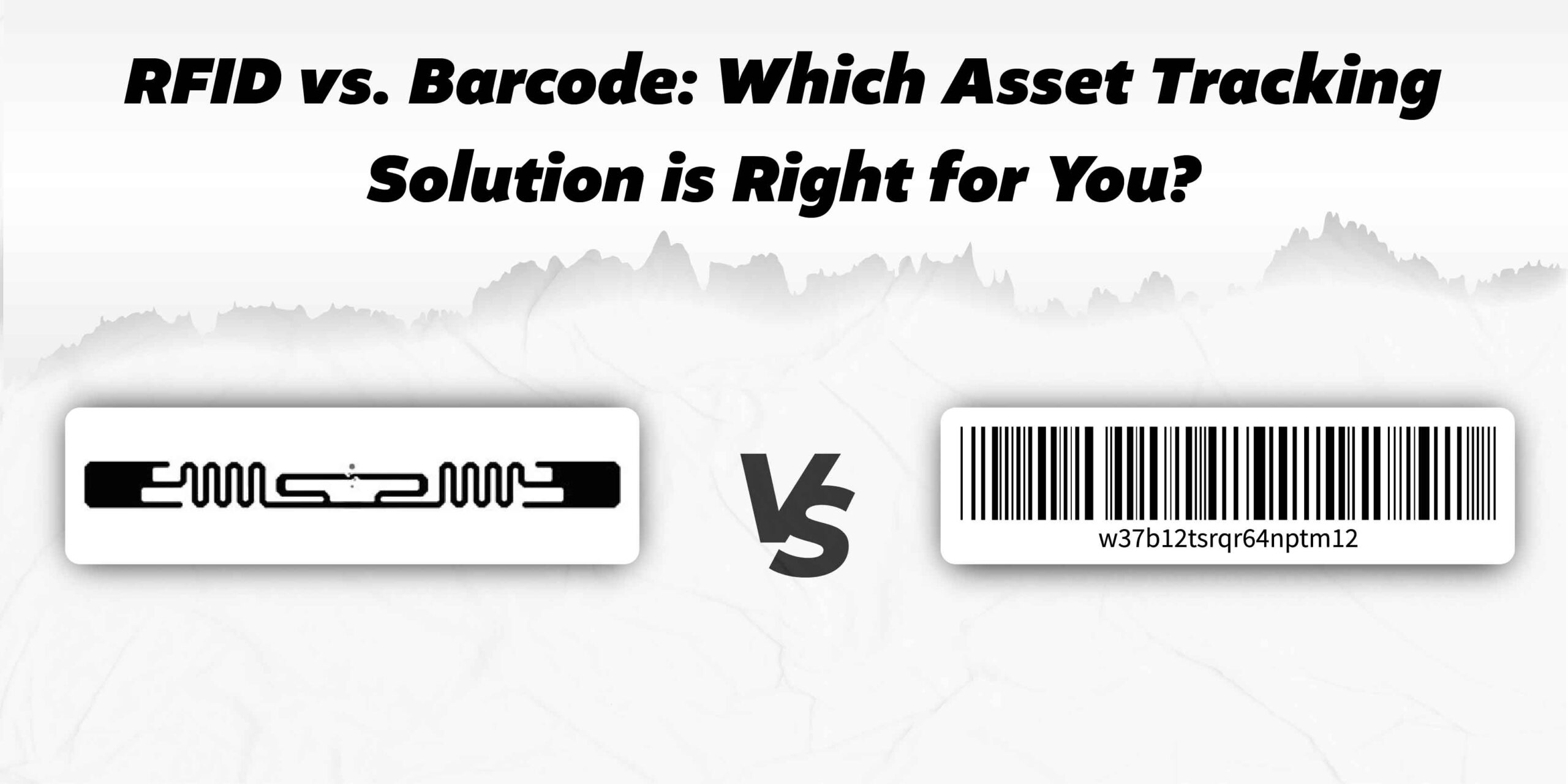In a competitive business environment, focusing on labor savings and ensuring productivity through efficient asset management is crucial. Whether you manage a small business or a large enterprise, choosing the right technology for asset tracking can significantly impact your operations. Two popular solutions are RFID and barcode technologies. This guide will help you understand the differences between these two options and decide which one is best for your business needs.
Understanding RFID and Barcode Technologies
1. What is RFID?
Definition and Basic Working Principles: RFID, or Radio Frequency Identification, uses electromagnetic fields to automatically identify and track RFID tags attached to objects. These tags contain electronically stored information. RFID readers are used to capture data from these tags, while RFID software processes and manages this data for various applications.

Types of RFID Tags (Passive, Active): Passive RFID tags are powered by the reader’s electromagnetic field, while active RFID tags have their own power source, enabling longer read ranges.
Common Uses and Applications: RFID is used in various applications, including inventory tracking, asset tracking, access control, and supply chain management.
2. What is Barcode?

Definition and Basic Working Principles: A barcode is a visual, machine-readable representation of data. Barcodes consist of parallel lines (1D) or squares, dots, and other shapes (2D) that encode information.
Types of Barcodes (1D, 2D): 1D barcodes store data in the widths and spacing of parallel lines (line of sight), while 2D barcodes can store more information in the patterns of squares, dots, and other shapes.
Common Uses and Applications: Barcodes are widely used in retail for product identification, inventory management, and point-of-sale systems.
Difference Between RFID and Barcode Technologies
Aspect |
RFID |
Barcode |
|---|---|---|
| Cost and Implementation | ||
| Initial Setup Costs | Higher initial investment in RFID tags and readers ensures advanced tracking capabilities and long-term benefits. | Lower initial setup costs. |
| Maintenance and Operational Costs | Advanced technology may require periodic maintenance, ensuring longterm reliability and performance. | Lower maintenance costs. |
| Ease of Implementation | Complex but offers robust and scalable solutions with expert installation and setup. | Easier to implement, widely familiar. |
| Data Capacity and Storage | ||
| Amount of Data Stored | Can store more data. | Limited by visual representation. |
| Data Update Capabilities | Can be updated with new data. | Static, cannot be modified once printed. |
| Read Range and Speed | ||
| Read Range | Longer read range. | Requires line-of-sight for scanning. |
| Speed of Data Capture | Can read multiple tags simultaneously and quickly. | Needs to be scanned individually. |
| Durability and Lifespan | ||
| Physical Durability | Generally more durable, withstands harsh environments better. | Less durable, can wear out or become damaged. |
| Environmental Resistance | More resistant to heat, moisture, and chemicals. | Less resistant to environmental factors. |
| Longevity and Reliability | Typically, it has a longer lifespan. | Shorter lifespan. |
| Accuracy and Reliability | ||
| Read Accuracy | Provides higher read accuracy in various environments, including those with obstacles. | Less accurate in challenging environments. |
| Error Rates and Data Redundancy | Lower error rates can include data redundancy to enhance reliability. | Higher error rates, less redundancy. |
| Reliability in High-Volume Ops | More reliable in high-volume operations requiring quick and accurate data capture. | Less reliable in high-volume operations. |
| Security | ||
| Data Security Features | Better data security features, including encryption and authentication. | Fewer data security features. |

RFID vs. Barcode for Asset Tracking Solution
When it comes to asset tracking solutions, both RFID and barcode technologies have their unique strengths and weaknesses. RFID offers the advantage of longer read ranges, the ability to scan multiple items simultaneously, and higher data capacity, making it ideal for environments where speed and accuracy are crucial. Barcodes, on the other hand, are more cost-effective, easier to implement, and are widely accepted across various industries. They are perfect for smaller businesses and applications where line-of-sight scanning is feasible and sufficient.
Asset Tracking Use cases of Industry-Specific
Manufacturing: RFID is utilized to track high-value assets and equipment throughout the manufacturing process, improve asset visibility, and reduce loss. Barcodes, on the other hand, are less commonly used in this context.
Retail: RFID significantly enhances asset tracking accuracy, helping manage high-value items and reducing loss. Barcodes are primarily used for checkout processes and inventory management.
Healthcare: RFID tracks critical medical equipment and supplies, ensuring accurate location and availability. Barcodes are often used for tracking patient data and medication.
Logistics and Supply Chain: RFID improves the management and tracking of assets within the supply chain, providing better visibility and reducing errors. Barcodes are typically used for managing shipments and documentation.
IT Industry: RFID is highly effective for tracking IT assets, providing real-time location data and reducing loss. Barcodes are less efficient in this context due to their need for line-of-sight scanning.
Tool Equipment and Small Spare Parts: RFID enhances the tracking of tools and small spare parts, offering precise location data and minimizing loss. Barcodes, which require manual handling and line-of-sight scanning, are less efficient.
Containers and Returnable Boxes: RFID is ideal for tracking returnable containers, offering efficient tracking and reducing loss. Barcodes are less suitable because they require manual scanning and line-of-sight.
Others (e.g., Libraries, Asset Management): RFID automates asset management processes, such as book check-ins/check-outs in libraries, and tracks various assets like computers and office equipment. Barcodes are used for basic asset tracking in these settings.
Pros and Cons of RFID vs. Barcode
1. Pros and Cons of RFID
Key Advantages: Longer read range, ability to read multiple tags simultaneously, higher data capacity, and durability.
Key Disadvantages: Higher initial setup and maintenance costs, and potential security and privacy issues.
2. Pros and Cons of Barcodes
Key Advantages: Lower costs, ease of implementation, widespread familiarity.
Key Disadvantages: Limited data capacity, requires line-of-sight, less durable.
Making the Right Choice for Your Business
Factors to Consider
Business Size and Scale: Larger operations with high-volume tracking needs and complex inventory management may find RFID more beneficial due to its efficiency and ability to handle multiple RFID tags simultaneously. Smaller businesses might opt for barcodes due to lower costs and simpler implementation.
Specific Needs and Requirements: Evaluate what needs to be tracked, the environment in which the technology will be used, and the required level of data security. RFID offers better performance in challenging environments and higher security, while barcodes are suitable for straightforward tracking tasks.
Budget Constraints: Evaluate the costs associated with each technology and your available budget.
Decision-Making Tips
Assessing Your Current System: Determine how well your current system meets your needs and what improvements are necessary.
Consulting with Experts: Seek advice from industry professionals or consultants to make an informed decision.
Future-Proofing Your Investment: Choose an RFID solution that can grow with your business and adapt to future needs.
The Software: RFID vs Barcode
The software used for managing RFID and barcode systems can significantly impact the efficiency of asset-tracking operations. RFID software typically includes features for real-time data collection, advanced analytics, and integration with other enterprise systems. It supports automated workflows and can handle large volumes of data effortlessly. Barcode software, while simpler, offers reliable performance for basic inventory and asset management tasks. It provides essential functionalities such as barcode generation, scanning, and data reporting, making it suitable for businesses with straightforward tracking needs.
Conclusion
Choosing between RFID and barcode technologies for asset tracking depends on various factors, including your specific requirements, budget, and the scale of your operations. Both technologies offer unique advantages and can significantly improve your asset management processes. By carefully evaluating your needs and considering the information provided, you can make an informed decision that will enhance your business's efficiency and productivity.
